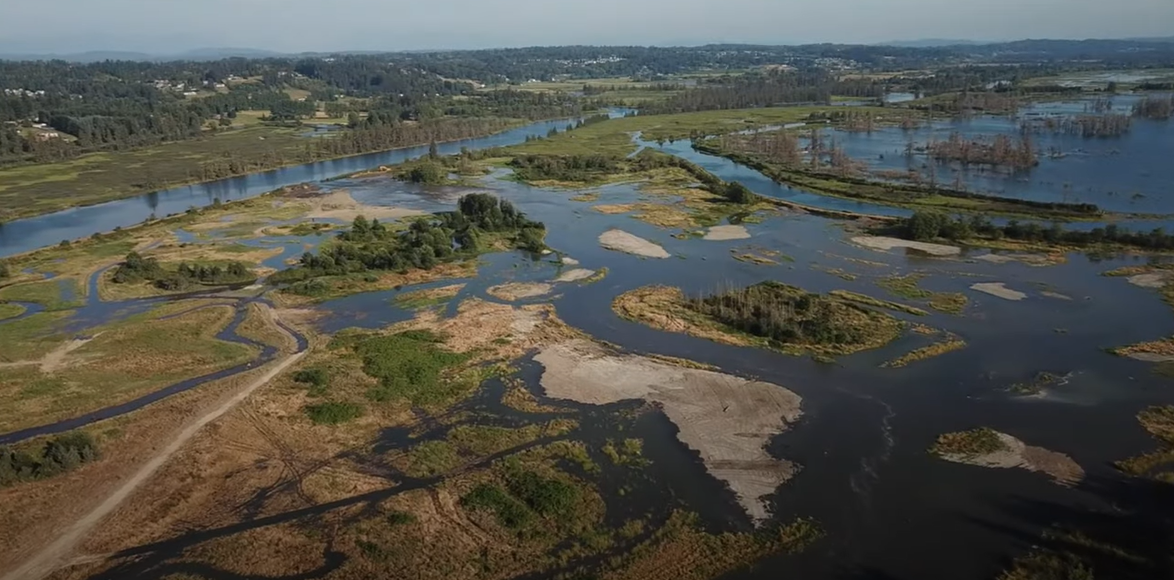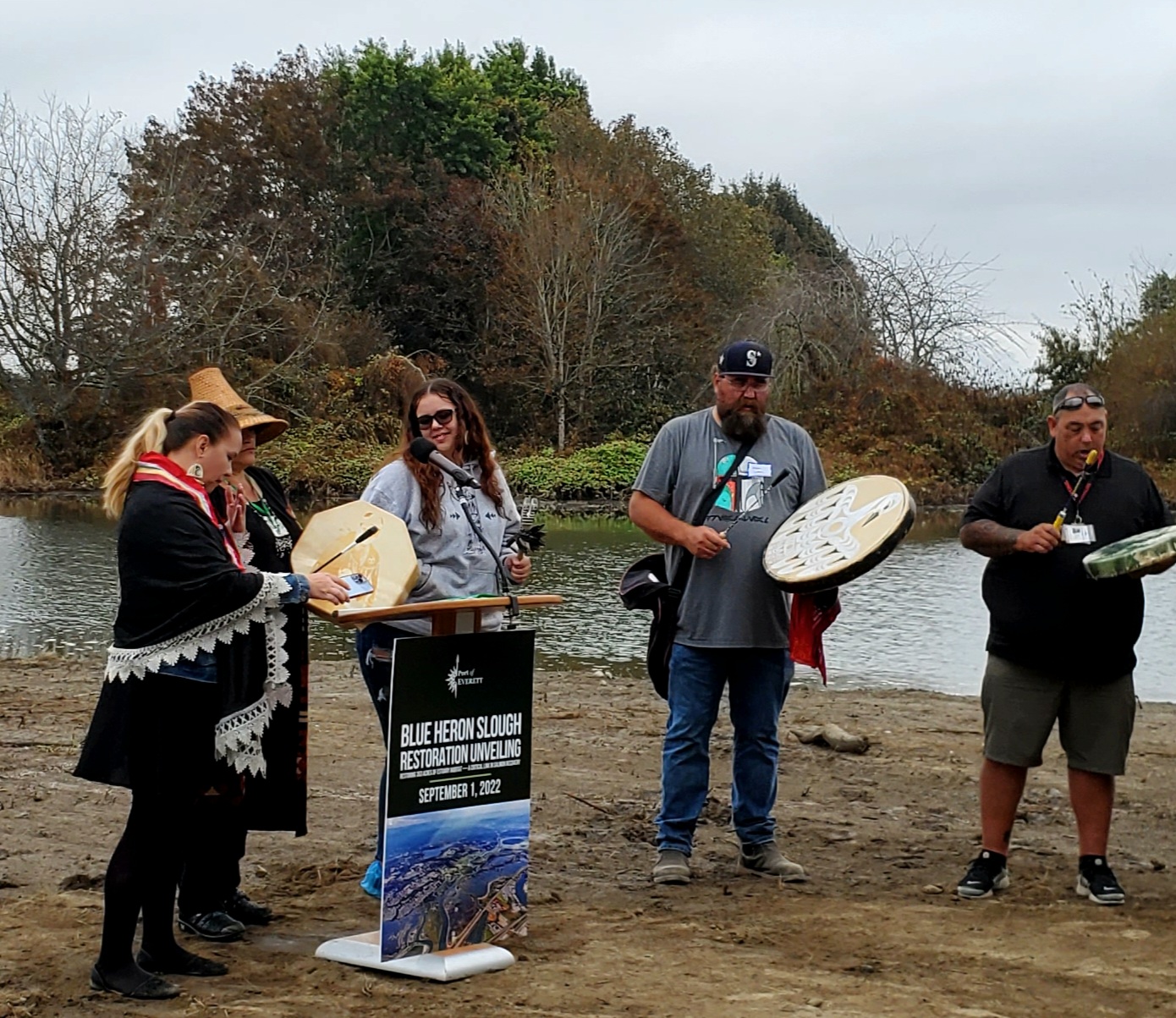
Blue Heron Slough after the two of the four planned dike breaches (courtesy of the Port of Everett).
Earlier this month we had the privilege of celebrating the unveiling of the Blue Heron Slough restoration with the Tulalip and Suquamish Tribes, and the Port of Everett.
This 353-acres project, one of the largest restoration projects along Puget Sound, is restoring the Snohomish River estuary. Juvenile salmon, bull trout, and many other species are expected to quickly inhabit and thrive within this newly formed estuary.
Tulalip Chairwoman Teri Gobin said this project not only helps salmon and other species, but will also benefit the qal̕qaləx̌ič, the orca whale.
Tulalip Tribal members perform a blessing of the site.
In the early 1900s, the area was cleared, diked, and drained for agricultural use, which ended nearly three decades ago. In 1993 the Port purchased the property with restoration in mind.
“I really appreciate the vision that the Port had when they purchased this land and set it aside for restoration purposes,” said Ecology Toxics Cleanup Program Manager, Barry Rogowski. “It has taken years of commitment to restore this critical habitat.”
A bird's eye view of the Slough after two dikes have been breached.
Two of the four planned dike sections have been breached, with the remaining two to take place soon during low tides. Water flows into the site with each successive breach and is currently flowing in and out of the site during the tide cycles.
A loader stands ready to make a third breach in the dike.
The project is in response to historical releases of hazardous materials into Port Gardner Bay. Ecology has been successfully working with the Port of Everett and other entities to clean up Port Gardner Bay in Everett.
This restoration project was determined to be the best way to compensate for injuries to natural resources resulting from historical hazardous releases from industrial activities.
In 2019, the Port came to an agreement with the Port Gardner Bay Trustees to construct the project. Ecology is a member of the Port Gardner Trustees, which is part of the Natural Resource Damage Assessment and Restoration (NRDAR) process. NRDA is a tool we and other natural resource trustees use to restore, recover, or protect natural resources and habitats affected by contamination.
The Port Gardner Bay Trustees are comprised of the Tulalip Tribes, Suquamish Tribe, U.S. Department of Interior, U.S. Fish and Wildlife Service, U.S. Department of Commerce, National Oceanic and Atmospheric Administration, and the Washington State Department of Ecology.
“This is just the beginning and we still have a lot of work to do to have our salmon come back abundantly,” said Chairwoman Teri Gobin. “In order to improve natural habitats, we have to work in partnership with others. And this is an example of that.”
The tribes hold a conservation easement on Blue Heron Slough and will protect the land in perpetuity, for conservation purposes.



